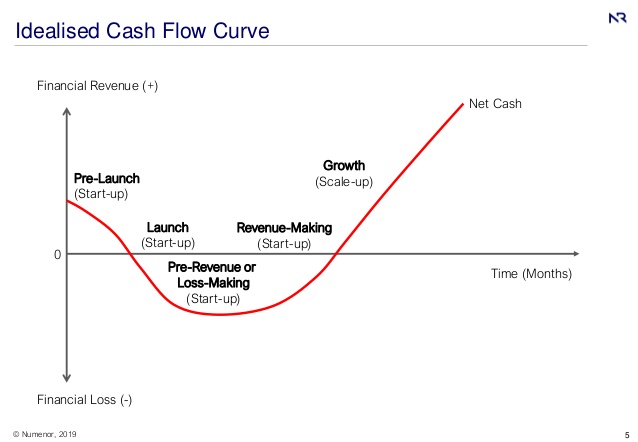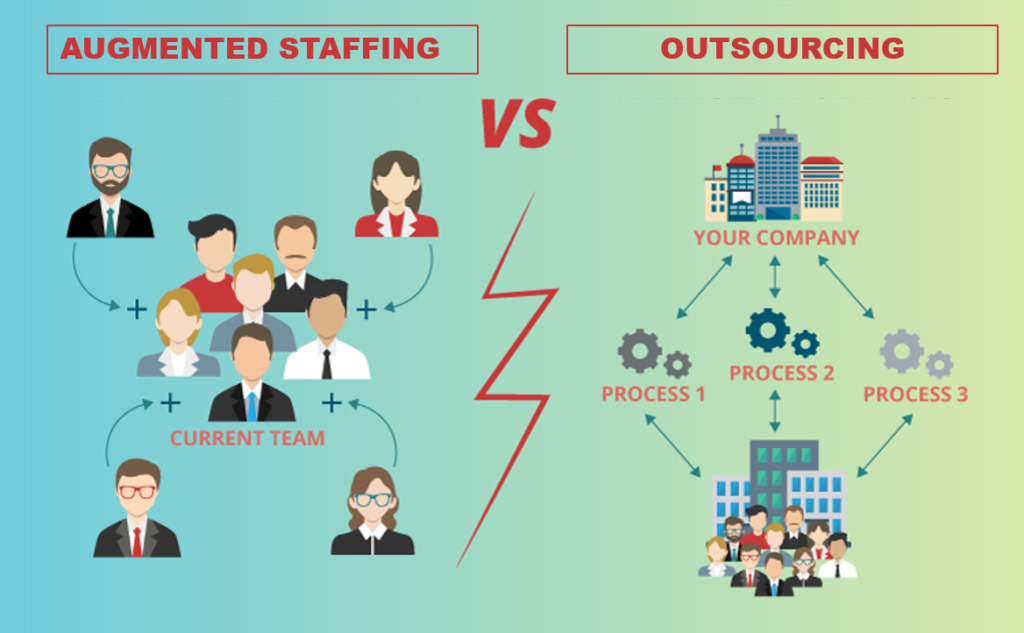
Digital Products has had an unprecedented impact on the economies and societies all over the world. As consumers embrace the latest digital services coming from innovative solutions, they force the startups and institutions to adapt and start new way of working. If you need to scale-up your digital products, outsourcing your development team is a great way to scale your company. This means you can get your product and software finished sooner or keep your budget on track.
What can force you to outsource your product team:
1) Access expertise
Maintain a fast pace and scale with the in-house resource is sometimes too difficult, When you’re looking to develop – and subsequently maintain – a new app or software for your business, you may find it easier to hire an expert rather than upskill your internal teams. Product solutions require experience in distributed development, integration with different payment, authentification, CRM, systems, building high load systems, information security systems, and compliance, and cutting-edge technologies like blockchain. This particular expertise is difficult, expensive to integrate in-house if you need to maintain it for the short term.
Note: It’s hard to build an in-house team when you’re trying to grow your product. Moreover, access to employees who have skills in cutting-edge areas such as artificial intelligence (AI) or blockchain might be even more difficult.
2) Difficulty to access top talent
To drive innovation, you need to keep up a fast speed. And it’s difficult to maintain your momentum when you’re dealing with recruitment issues. Most product management operates in locations where sourcing and recruiting talented software engineers is expensive and time-consuming. Hiring top talent cost ave 30% – 50% than the average. And money is not only the key decision factor, but you also need to have a cutting edge environment and product to convince top talents to join your company.
Many startups have built their products by taking talents they could never afford to hire full-time. Github, Slack, and Basecamp all relied on outsourced products in their early days like so did technology giants like Google or Alibaba.
Relying on external expertise during the design stage or rapid growth is a smart move. Its, for example, the agency Metalab that mostly contributes to design the product experience of Slack during the massive growth of 2016.
3) Lack of cash flow

Building an in-house team is expensive and requires strong leadership and management. You will spend lot of money on recruiting candidates but also onboard them and training them (as most of the time you won’t be able to access top talent!). With full-time employees, expect to pay the incredibly high salaries of software developers and a range of overhead costs. Such costs could easily lead to compromising its survival when they go through a period of generating low revenue.
Note: Hiring an employee costs significantly more (30-40%) than an equivalent independent worker, full-time employees are the most expensive and least flexible source of labor.
4) Short timeline:
If your product roadmap cannot afford delays and you promise since longe time a feature to your customer, the best is some time to accelerate your discovery and your release to meets deadline expectations.
Can augmented staffing or outsourcing boost your product strategy?
Outsourcing can come in different ways that solve the most pressing problems of companies that rely on products and tight deadlines. Companies can gain access to specialized knowledge and harness the expertise of technologies for their products. They can engage experts only for as long as they’re needed. Moreover, product managers can partner with a company that has extensive expertise in the core of the activities and the required intellectual capital to drive innovation.
Most of the tech-savvy experts fit in companies where tech or SAAS solutions have an important footprint. More than half of the products developed today don’t need deep expertise, just a framework, and guidelines for product and tech framework as a playground.
1) Gain in flexibility during MVP or Discovery phases
By moving with this staffing model, you don’t need to pay any cost of recruiting and training experts – nor the benefits, perks, office space, and other overhead costs. Moreover, for startups you don’t tie to paying the high salaries required to keep experts on board full-time. Augmented staffing allows scaling the team up or down to match the evolving requirements of your project. It also liberates you from keeping a bad fit that can have important consequences like slowing progress to compromise budget. Hiring specialized resources can strain your capital that you could be allocated in other strategic priorities.
2) Accelerate your time to market
Speed matters a lot for product management and moreover velocity for agile delivery, having experiment, and capable team to scale at a fast pace make the difference. You can also get skilled developers with proven experience on similar projects, without being slow down recruitment. The competition is massive, build, execute, and innovate efficiently is the key aspects of the success factor for your product. The most successful startups build their success in developing an execution machine that can rapidly deliver innovative products.
3) Higher quality
You can ensure the high quality of your product by choosing an excellent track record partner used to deliver solutions corresponding to your industry. Proven expertise on similar projects means it will avoid the traditional pitfalls and bottlenecks. Corporate and startups are at the same level: Deloitte’s Global Outsourcing Survey 2018 showed that 49% of organizations are moving services to outside providers as they innovate. Don’t forget that your capital is not forever, your funds may dry out if your board stop trusting you to deliver quality. Plus don’t forget that impression on your customers can have catastrophic consequences.
Conclusion
Looking for the perfect organization to optimize your scale curve for your product is the holy grail. And having a team expansion responsive or outsourced in some situations can be a part of the quest to find it. To stay nimble and lean, companies can’t afford anymore to hire savvy skilled professionals full-time if you don’t have the volume of projects for it. Instead, they can rely on external teams that are easy to scale-up or down depending on the changing priorities of their product.
Based on this, you should probably wonder if we can outsource all parts of the product development team – Developer, Product Manager or Designer? The answer is yes. Based on your product stage and your industry situation you will also have a different approach to integrate external teams:
- Discovery, ideations: On-demand, part-time and project-based each team can partly work remotely ;
- Production, delivery: Squads based on dedicate stream or guilds, where the product manager defines the delivery model ;
- Launch, Growth: Dedicated squads with precise scope identified to ensure the escalations and support.

On the other side, there is a various different approach of outsourcing such as augmented staffing and offshoring. What matters is your current situation, your experience that you need to resolve to fast your problems and your management capacities. Sometimes, having fresh new eyes and fast learner outsourced give also to your company the capacity to pivot for the best solution rather than being struggle into legacy solutions. To get top quality and ensure smooth collaboration, it’s best to follow the general advice for choosing an outsourcing provider. Your strategic partner should offer skilled resources and have plenty of experience in this area. Different collaboration model can be set, you need to consider some variables that influence your partnership model:
- Track record of the partner, testimonials, and references (do not hesitate to ask some details)
- List of dedicated resources and backgrounds
- Management and reporting the progression process
- Knowledge transfer and change management
- Management of the technical debt
- Existing documentation of your current state
- Clear vision and roadmap
- Risk matrix – Scope of work estimated
- …
Get in touch with us if you’re looking for more guidelines and augmented stating to build and set up your products. We have experience working in product management and have helped clients to design product teams and grow their products.
Ressources:
The gig economy – the hiring effects